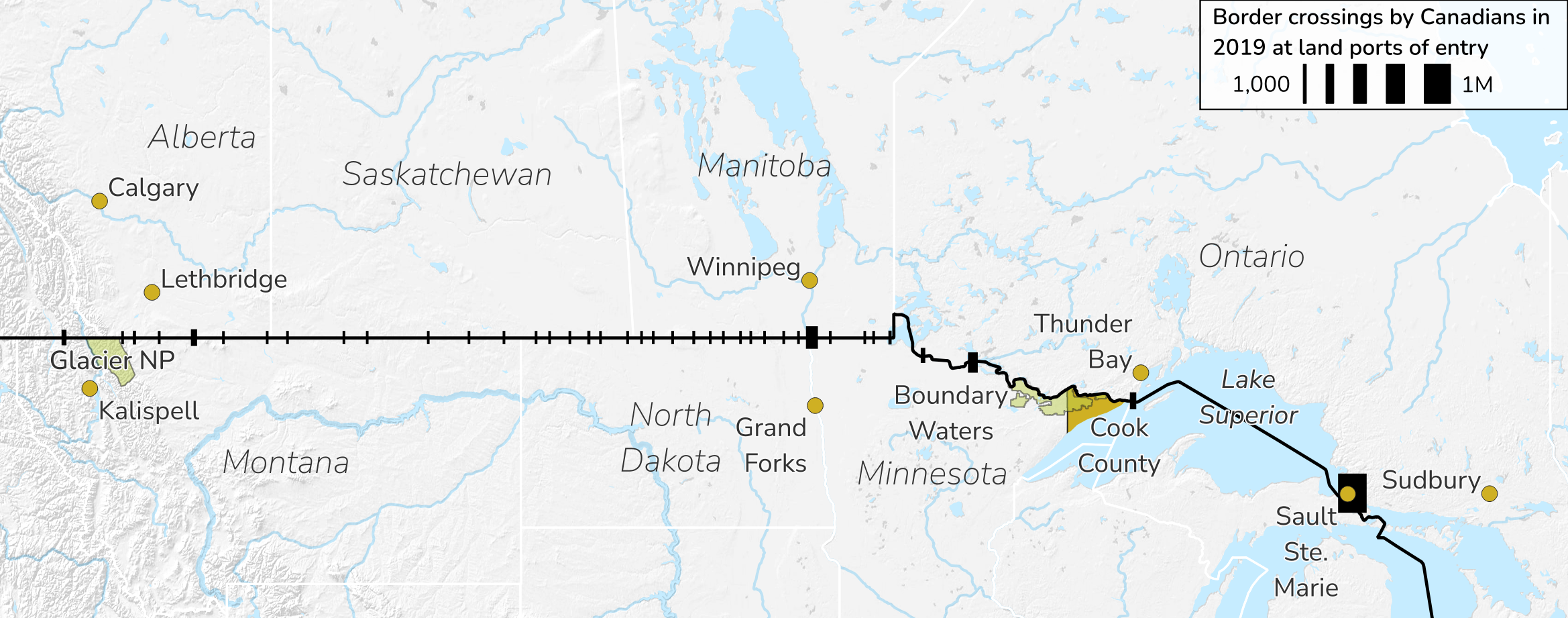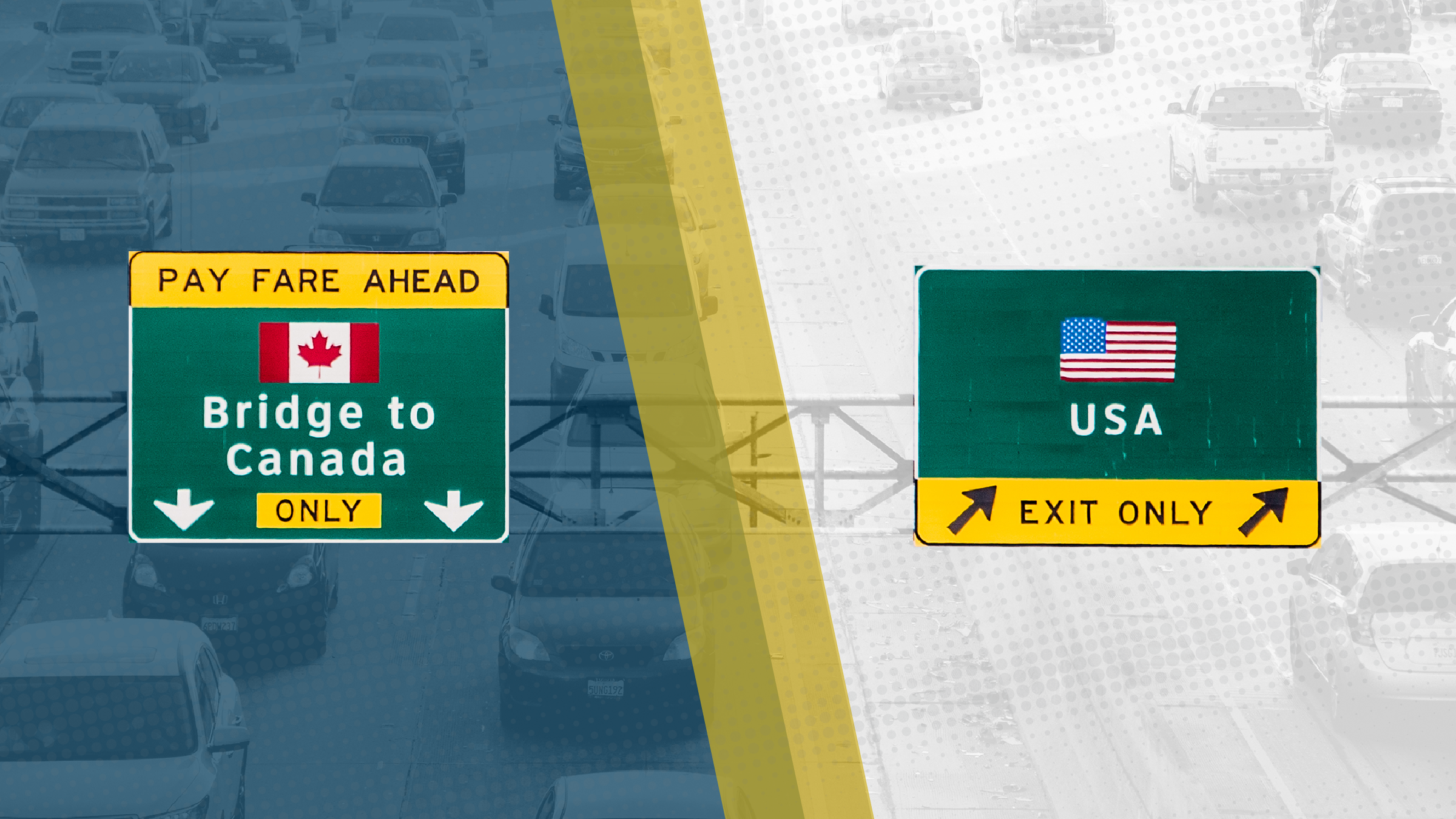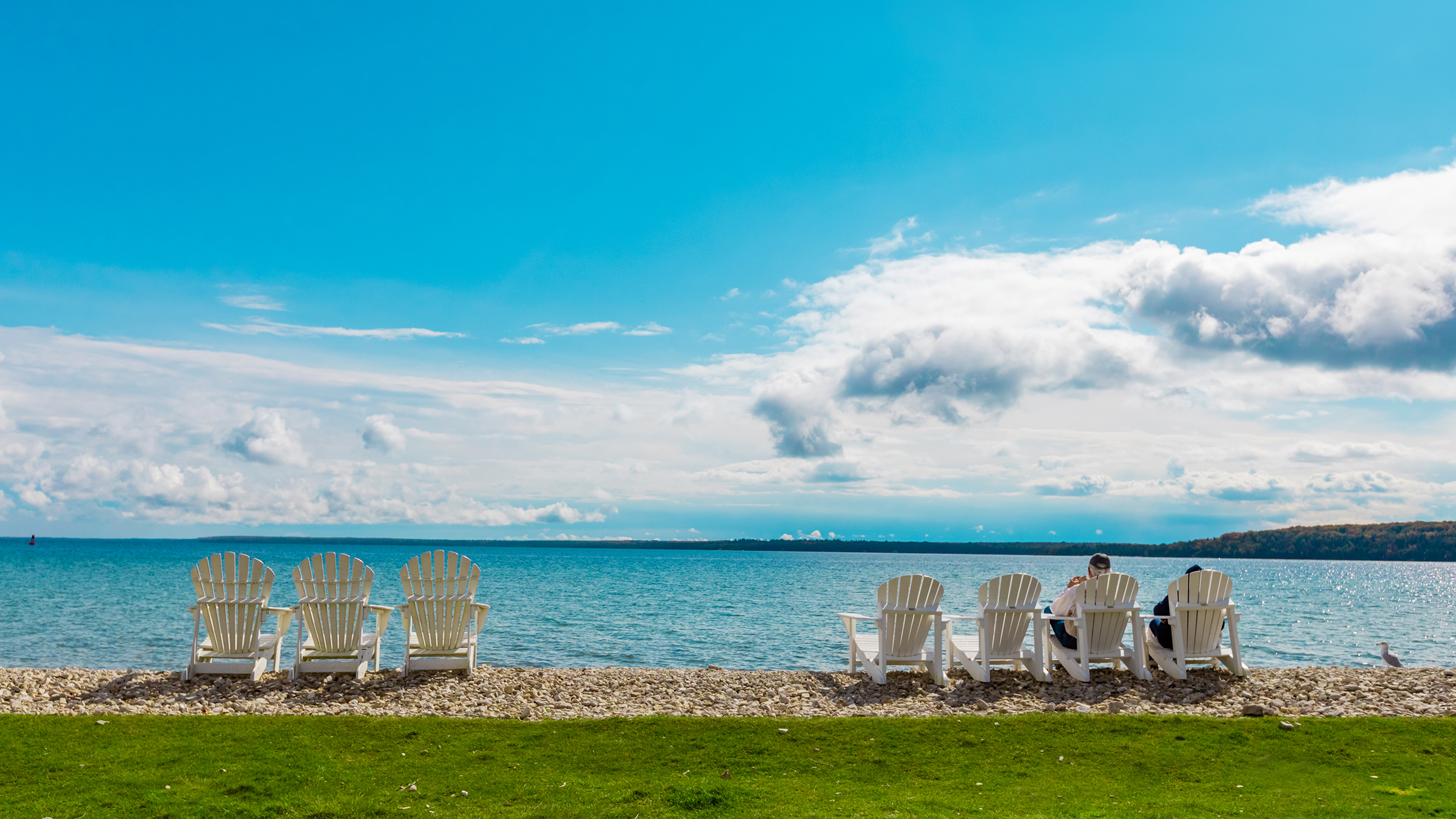From her office by the river that separates Sault Ste. Marie, Michigan, from the city of the same name in Canada, Linda Hoath could see many cars on the bridge connecting the two cities.
For most of the pandemic, she said, traffic consisted of only a few cars now and then and some trucks. “It was really sad to see nothing on the bridge for two years.”
But since April, when Canada eased reentry requirements, traffic has grown by leaps and bounds.
That’s good news to Hoath, who leads the Sault Area Convention and Visitors Bureau and serves on the governing board for the International Bridge. Still, she said, “We're not back. We’re 50 percent down from what we were in 2019. But it's nice to see that number climbing.”
Canadian visitors are extremely important to the economy of Ninth District cities located near the border. In cities that are adjacent to the border, such as Sault Ste. Marie, Canadian visitors are a common sight at gas stations and grocery stores. In cities farther south, many Canadian visitors are tourists looking for entertainment and shopping.
“Over and over again, we've always heard it's that weekend getaway,” said Julie Rygg, executive director of the Greater Grand Forks Convention & Visitors Bureau in North Dakota. “They're coming to shop, eat out in our restaurants, and of course [attend] some of our events, particularly our concerts.”
Most of that came to an end when the U.S. and Canada limited border crossings to essential travel in response to the spread of COVID-19.
The agency Statistics Canada, which offers more detail on border traffic than U.S. agencies, reports that the volume of Canadians returning to Canada using land ports of entry along the border with Ninth District states fell by 90 percent in April 2020 compared with the previous month (Figure 1).
The U.S. border has been reopened to Canadians since November 2021, but Canada imposed tough restrictions, including expensive pre-arrival testing for COVID-19, that deterred casual travel. In April 2022, the first full month with most restrictions lifted, the volume of returning Canadians more than doubled compared with the previous month but was still less than half the pre-pandemic volume.
Fewer Canadian shoppers, more American hikers
How much the absence of Canadians affected a border community in the U.S. depended a lot on whether the community was able to attract more American visitors. During most of the pandemic, what many Americans wanted was outdoor recreation, which offered them a chance to get away with few of the COVID-19 risks associated with indoor activities.
In Kalispell, Montana, American visitors have “more than made up” for the loss of revenue from Canadians in the past two years, said Diane Medler, executive director of Discover Kalispell, the local visitors bureau (see Figure 2 for map).

The area, which is less than an hour away by car from Glacier National Park and Flathead Lake, saw visits soar in 2020 and 2021. The number of out-of-state visitors to Flathead County, which includes Kalispell, was 14 percent higher in 2020 and 5 percent higher in 2021 compared with 2019, according to surveys conducted by the University of Montana’s Institute for Tourism and Recreation Research. In normal years, about 10 percent of visitors are from Canada. In the past two years, it was less than 1 percent.
High demand from American tourists has driven up costs so much that would-be tourists from up north are feeling sticker shock, Medler said. Canadians, she said, are telling her organization, “We love coming down there but your hotel rates and everything is so expensive—well, shame on you.”
Cook County, Minnesota, found itself in a similar situation, according to Kjersti Vick, marketing director at the Cook County Events and Visitors Bureau. Some businesses that relied heavily on Canadians, such as the Grand Portage Lodge & Casino, were hurt. But many others benefited from an influx of American visitors coming from farther away than before, including Iowa and South Dakota.
Most of the county’s larger communities lie along a picturesque drive on the shore of Lake Superior, and the main eastern entrance to the Boundary Waters Canoe Area Wilderness lies in the county. In 2020, BWCAW saw the most visitors in at least a decade with visits up 16 percent compared with 2019, according to U.S. Forest Service reports; the 2021 season was marred by wildfire.
Where Canadian traffic is hard to replace
But not all border and near-border communities were able to replace the lost Canadian traffic.
Sault Ste. Marie, despite being close to outdoor recreation in Michigan’s Upper Peninsula, did see a decline in visits throughout most of the pandemic, according to Hoath. Lodging tax revenue her organization receives fell 24 percent in 2020 compared with 2019. In 2021, revenue came close to but didn’t exceed 2019 levels.
Still, Hoath said she’s thankful lodging tax revenue didn’t drop more than it did, mostly because of outdoor attractions such as the St. Marys River and Lake Superior beaches.
But the impact of border closings is likely worse than lodging taxes reveal. The two Sault Ste. Maries are so close that residents of one would routinely shop and even hold jobs in the other. Hoath said one colleague at the visitors bureau had to live apart from her Canadian husband when the border closed because he had a job on the Ontario side that required him to be physically present. These routine crossings have made the local border post the busiest in the Ninth District, with 9 out of 10 visits from Canada being day trips; the average in the district is 6 of 10.
The loss of that kind of traffic would be hard to make up with out-of-town Americans.
For Grand Forks, the loss of Canadian traffic was a bigger deal because it had a harder time attracting American visitors during the pandemic.
Surrounded by farmland, the city isn’t famous for outdoor recreation. The main attractions for American visitors are usually concerts, sports tournaments, and other events, many of which weren’t held during the pandemic or were held virtually. The University of North Dakota, for example, held four virtual graduation ceremonies between spring 2020 and spring 2021. The student body makes up about a quarter of the city’s population, and many of the graduates’ family members and friends didn’t come to town.
“Those Manitobans not being able to come here—that was definitely a big hole in what we were used to seeing, particularly when you look at the summer months and you look at those long holiday weekends,” Rygg said.
Compared with May 2019, hotel occupancy fell 27 percentage points in May 2020 and 11.4 percentage points in May 2021, according to data from the Greater Grand Forks Convention & Visitors Bureau. Those numbers aren’t broken out for Canadians, but Rygg figured their absence contributed a lot to the falling numbers. Prior to the pandemic, Grand Forks was such a popular destination for Canadians that Canad Inns, a chain well known in Manitoba but little known in North Dakota, built a 192-room hotel in the city to take advantage of the traffic.
What summer holds in store
So far in 2022, Canadian visits remain far below pre-pandemic levels, and it’s not clear if this will change over the summer.
“We’re starting to see things get better but it's definitely a slow process,” said Rygg. In Grand Forks, May occupancy was 3 percentage points lower than in May 2019, she reported.
In Kalispell, occupancy has trended higher, but Medler reported most are Americans; Canadians, based on their complaints about high costs, likely chose less pricey destinations in their own country. She hopes they come back in the fall and winter, when American visitors are fewer, prices are lower, and the impact of Canadian visitors is higher.
One positive sign so far is the value of the Canadian dollar in relation to the U.S. dollar. Historically, Canadian visits increase when each Canadian dollar is worth a larger fraction of a U.S. dollar and decrease when it’s worth less (Figure 3). For now, the Canadian dollar is worth more compared with 2019.
Hoath said that even though inflation is driving prices up in the U.S., many items are still less expensive than in Canada. Canadians are coming over to buy clothes, gasoline, and groceries, she said, describing Canadians pushing shopping carts full of meat. “I mean, you can just see the difference right now compared to what it was.”
Tu-Uyen Tran is the senior writer in the Minneapolis Fed’s Public Affairs department. He specializes in deeply reported, data-driven articles. Before joining the Bank in 2018, Tu-Uyen was an editor and reporter in Fargo, Grand Forks, and Seattle.






